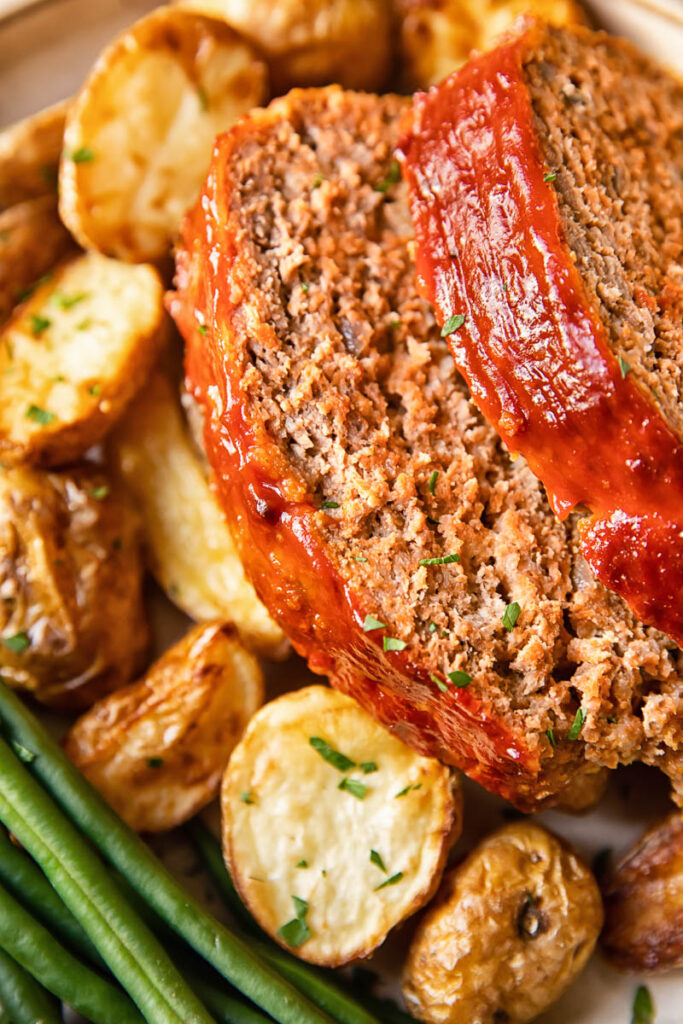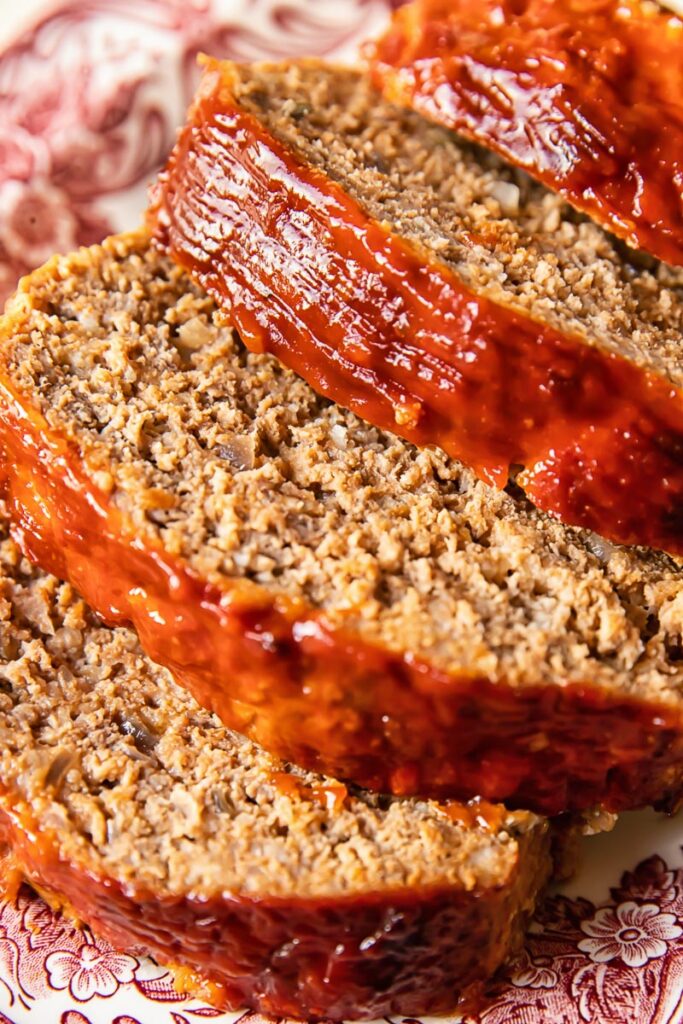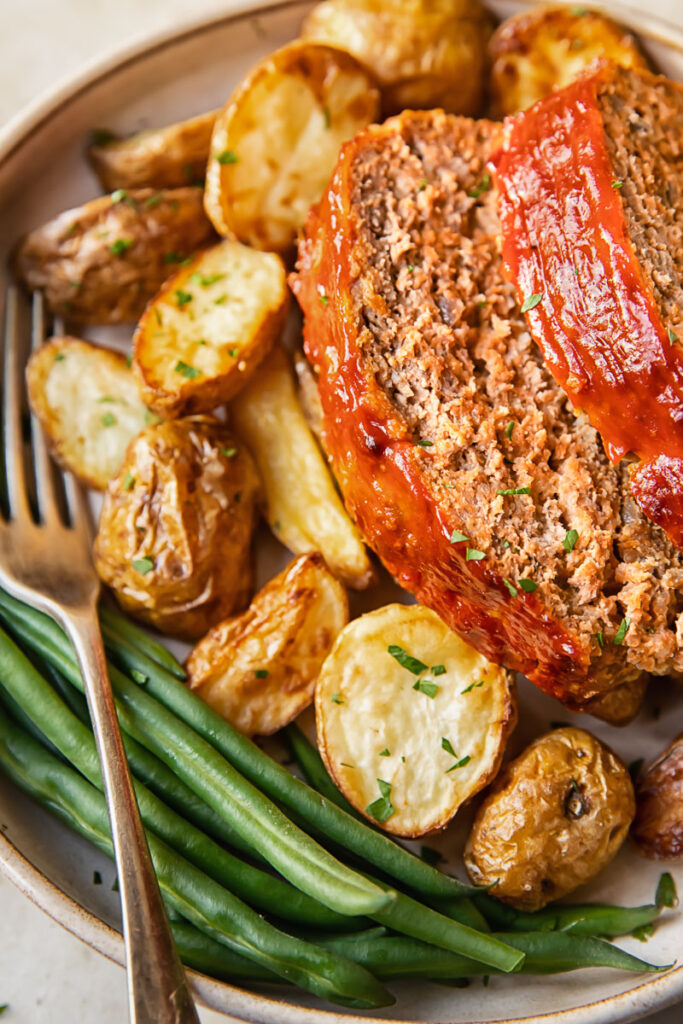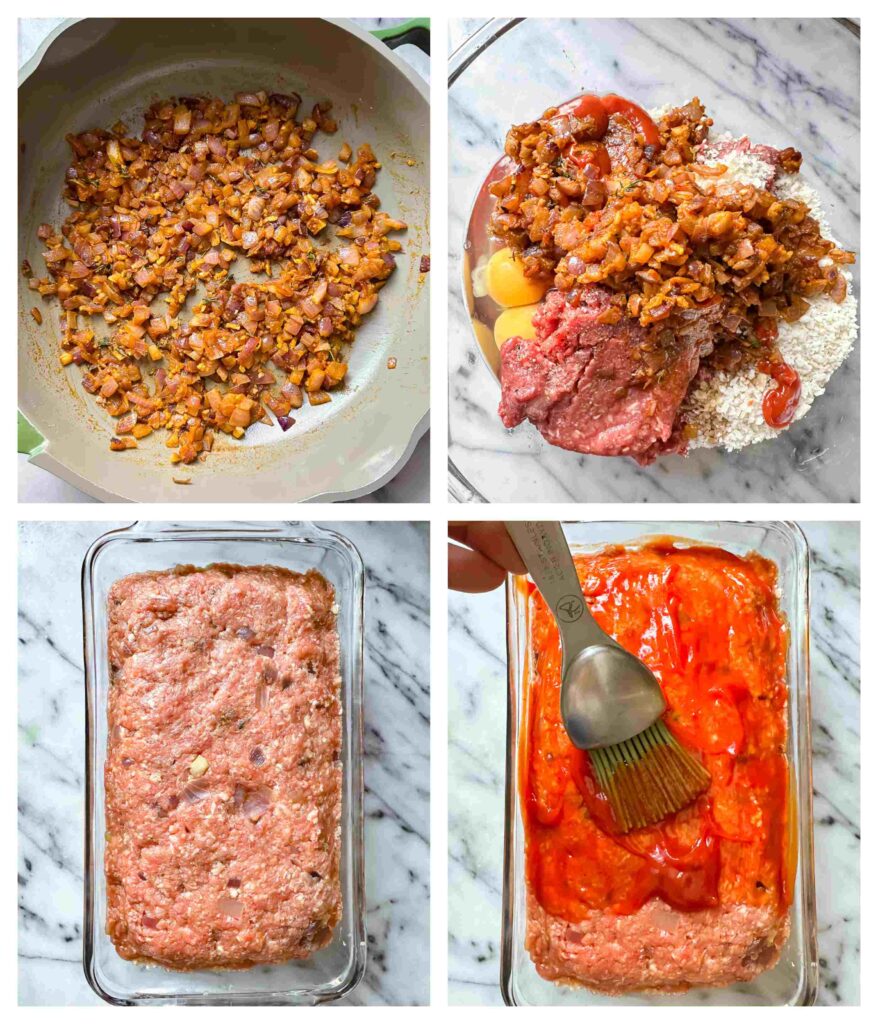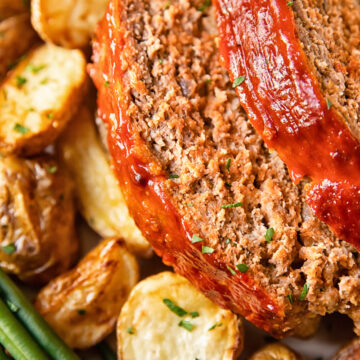Speaking of retro recipe revivals, have you tried this Tater Tot Casserole? Made without the canned soup but still a nostalgic blast from the past.
Classic meatloaf recipe
Understanding the ingredients means pulling off a sumptuous ketchup-glazed meatloaf is surprisingly easy. A combination of meats gives a bonus flavour dimension to the dish. In mine, I use equal measures of ground beef and pork. Other recipes suggest mixing in pricey venison or veal. My budget-friendly version of the classic meatloaf recipe will result in a tender and succulent loaf. Onions need to be given a slow sauté to release flavour into the oil. Then add the herbs and spices. I like thyme, coriander and smoked paprika. You could use slightly spicier cayenne if that’s to your taste. Egg is important to bind the meat together. Without it, you’ll have a crumbly meatloaf! Breadcrumbs will soak up the meat juices while cooking, preventing it from drying out. What’s more they contribute to a lighter-textured meatloaf. Without them, it’s a bit like biting into a block of compacted hamburger. I use panko breadcrumbs which absorb less oil. Worcestershire sauce, ketchup and salt and pepper are the seasonings. Worcestershire sauce is a wonder condiment that brings the umami to anything savoury! Some recipes will add a ½ cup of milk to the mix to ensure moisture. I stick to plain water which works just as well. If you want to ramp things up yet another notch, try out my Creamy Mushroom Stuffed Meatloaf!
Meatloaf glaze
The glaze is crucial. I believe it makes all the difference between loving and loathing meatloaf. If you’re not a fan, I bet it’s because you’ve never had one with a good glaze. The glaze does a couple of essential things; first, it stops moisture escaping while the meatloaf is cooking. Second, it sparks a tangy firework of flavour. Third, when it’s cooked it forms a sweet, sticky, caramelised crust that everyone will be fighting over. I’ve adhered to a glaze used in a classic meatloaf recipe by using ketchup, brown sugar and vinegar (apple cider). So, what’s this special secret ingredient? Gochujang paste. It’s a deep red, fermented bean paste from Korea. This snappy Asian condiment is subtly smoky, sweet and spicy and does saucy things to beef.
Serving suggestions
It’s hard to resist serving a classic meatloaf with classic sides!While perfecting your meatloaf, it’s a good idea to include at least one semi-slick or saucy sidekick, i.e. a runny mash or cheesy mac to mask any over bakedness. Some of my favourite combos are:
Instant pot mash with cream cheese + crispy Brussels sprouts with honey and bacon. Crispy air fryer potatoes + lemon garlic greens beans. Baked macaroni and cheese + buttery corn on the cob.
Storage and leftovers
Meatloaf is the ultimate mom-hack for a low-prep weeknight meal as, once prepared, it offers a range of storage options: 1) Prepare, bake and eat on the day. 2) Prepare, refrigerate and eat the next day (no more than two). 3) Prepare, bake, freeze for up to six months, bake again to eat. 4) Prepare, freeze for up to six months, thaw and bake to eat. Whatever you settle on, make sure to use your meat thermometer when cooking to check the temperature at the centre of the loaf. And as for cooked leftovers, they’ll keep for 3-4 days in the fridge. Use them up in the most incredibly satisfying sandwiches! For a cold deli-style doorstopper, layer crisp lettuce, juicy tomato, and thick meatloaf slabs smothered in mustard and pickles on sourdough. Or for an economical twist on my hot and melty French Dip Sandwich, just replace the roast beef with thicker meatloaf slices.
More beef recipes to try:
Slow Cooker Italian Beef Stew Harissa Beef Stuffed Eggplant Ground Beef Wellington (the humble version) Easy Stuffed Shells with Pesto and Tomato Beef Sauce
